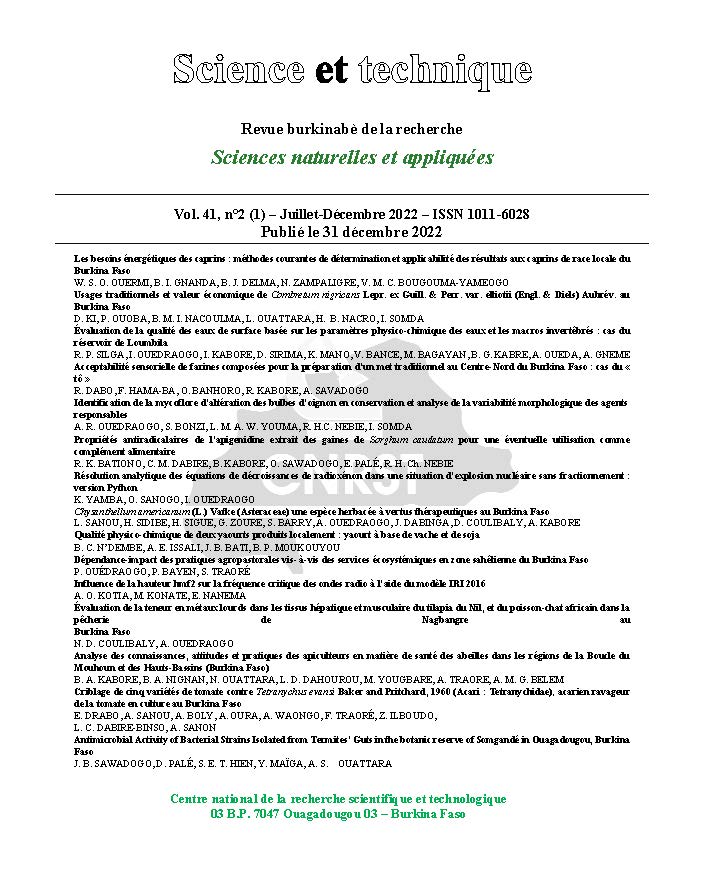Energy requirements of goats: current methods of determination and applicability of results to local goats in Burkina Faso
Keywords:
Goats, Local breeds, Energy requirements, Methods for determining requirements, Temperate climate, Tropical climateAbstract
Burkina Faso is experiencing strong growth in demand for animal food. To meet this demand, increasing productivity through better nutrition management is one of the main options. This literature review makes a state of the art of knowledge on the energy requirements of goats, with the aim of contributing to a better productivity of the breeding systems. It shows that the financial, material and human conditions are often not met for the use of the main methods for determining energy requirements. There is therefore very little work on the nutritional requirements of local breeds, particularly those of Burkina Faso. Two trends are defended in this matter. One argues that the energy requirements of our local breeds would remain lower than those of temperate breeds, while the other argues that these energy requirements would be higher than those of temperate breeds. This variability is due to genetic differences as well as to breeding conditions. In order to improve the productivity and reduce the environmental impact of goat breeding in Burkina Faso, it appears essential to determine the specific energy requirements through work in local breeding conditions, with local animal and plant materials.

